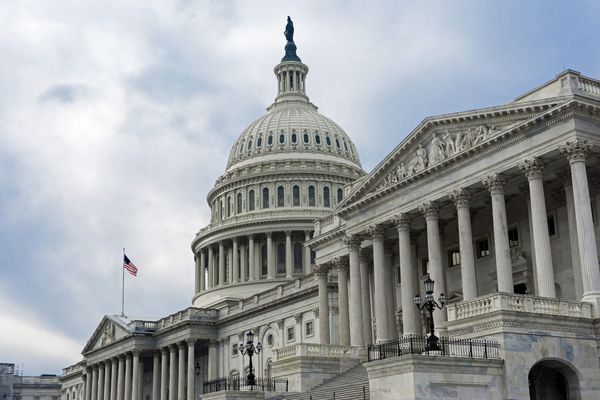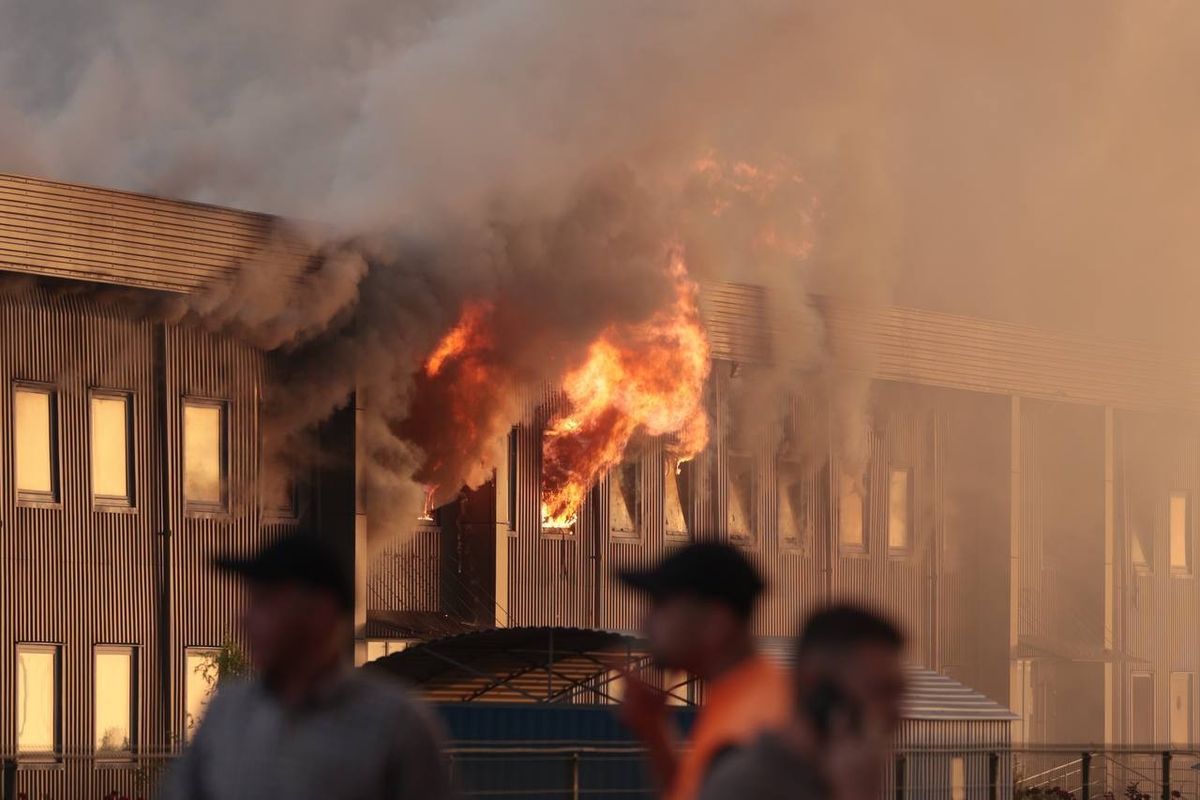The Trump Administration’s National Strategy for Counterterrorism, released this past October, has received positive reviews for its balanced focus on the challenges associated with confronting terrorism abroad and in the homeland. In practice, however, little has been done to address the threat of America’s ‘domestic terrorists’ and there remains no preventative strategy for the homeland.
The Homeland brings you a two-part examination of these vexing challenges with a look at the challenges of preventing terrorism in the homeland by American persons, inspired by domestic events and sometimes fueled by foreign state and non-state actors. Part I paints the threat landscape and challenges in prevention. Part II will provide a framework for policymakers to make greater headway. The Program on Extremism at The George Washington University recently issued the first of several policy briefs on this matter. Dr. Haroro J. Ingram is a senior research fellow with the Program.
After almost two decades fighting terrorism abroad, violent extremists at home may represent the most significant national security threat confronting the United States. In 2018, domestic extremists were responsible for a large-scale assassination attempt on public figures, the nation’s deadliest anti-Semitic attack, with the murder of eleven worshippers at the Tree of Life synagogue in Pittsburgh, and a double murder in a Kroger supermarket in Kentucky. Individuals from Chicago and Ohio were charged with terrorism-related offenses for providing material support to the Islamic State, while a resident of Alabama was charged with providing material support to Al-Qaeda and aiding and abetting others.
As politicians and national security practitioners reflect on how best to confront violent extremism at home, arguably the greatest vulnerability in efforts to counter terrorism in the United States is the absence of an overarching terrorism prevention strategy. This was acknowledged in the National Strategy for Counterterrorism released last October. It stated: “Over the past seventeen years, we have built a robust counterterrorism architecture to stop attacks and eliminate terrorists, but we have not developed a prevention architecture to thwart terrorist radicalization and recruitment.” Filling this void represents a key national security challenge and efforts to do so are likely to be complicated by three factors: (i.) the history of preventative efforts in the United States, (ii.) the diversity of threats in the homeland, and (iii.) the challenges inherent to democracies engaging in pre-criminal interventions.
The history of preventative strategy in the United States dates back to 2006 when the Bush administration’s National Security Strategy identified prevention as a key pillar of its approach to combating terrorism. However, it was not until August 2011 that the Obama administration, under the banner of Countering Violent Extremism (CVE), actively pursued a preventative strategy in the homeland with Empowering Local Partners to Prevent Violent Extremism in the United States. That was followed, in December 2011, by a strategic implementation plan. By 2015, a range of pilot CVE programs were rolled-out across Los Angeles, Minneapolis and Boston with each city adopting a different model of prevention. Despite a new implementation plan being released in October 2016, the new plan largely echoed the guidance contained in the administration’s original August 2011 document.
But the CVE strategy attracted criticism from experts, civil society advocates and community representatives alike. Experts typically highlighted as fundamental problems with the Obama administration’s approach the lack of a coherent overarching CVE strategy, inadequate funding and responsibility being spread over too many federal agencies. Some members of the communities that were the targets of these CVE strategies – for example in Los Angeles and Minneapolis – criticized its subjective and disproportionate focus on Muslim Americans, its potentially marginalizing effect on those communities, and the risk that such initiatives were in fact, counterproductive to their intended aims. Civil society advocates questioned not only the constitutionality, but the limited empirical-basis upon which these CVE strategies were founded. More broadly, the field of CVE research had, fairly or otherwise, been criticized for being ill-defined and built on poor evidentiary research which had, in turn, contributed to the CVE practice often being seen as ambiguous in scope and poorly evaluated. These criticisms echoed those from other countries where similar CVE strategies had been implemented.
While the Trump administration abandoned ‘CVE’ (at least as a term) in 2017, little has been offered to fill that strategic-policy void. Some experts and community advocates have argued that the combination of the policy vacuum, inflammatory rhetoric and the withdrawal of funding for community-based programs has made it harder to meet the challenges of implementing effective preventative strategies. While a policy reset is likely necessary on the issue of terrorism prevention in the homeland, it is vital that components of previous CVE strategies that were shown to be effective, such as the importance of targeted individual interventions, are adopted to avoid ‘reinventing the wheel.’
Terrorism prevention efforts must also consider the scope and variety of violent extremist threats in the homeland. The 2018 National Strategy for Counterterrorism describes a complex threat environment characterized by actors with a diverse array of ideological motivations, many encouraged if not directly supported, by foreign-based state and non-state actors, but almost all of whom exploit the Internet and new technologies to build their networks as well as amplify the reach and impact of their words and deeds.
Three threat trends in the homeland are most concerning. First, right-wing extremists are responsible for the most frequent acts of politically-motivated violence in the United States. Second is the persistent threat posed by homegrown jihadists, often inspired by groups such as the Islamic State and Al-Qaeda. The third is the sheer diversity of the United States’ violent extremism problem, which is even greater when taking into account the motivations of lone shooters. This diversity challenge contributes to a volatility within the security environment whereby the threat posed by certain groups and actors (e.g. the extreme right) may contribute to the radicalization of others (e.g. the extreme left) in a counter-movement dynamic. The opportunistic manipulation of these undercurrents, coupled with growing concerns that foreign interference by state and non-state actors are adding fuel to the threat, highlights the complexity of the 21st century security environment.
A key implication of these trends is that there is no archetypal American violent extremist. Even within threat types, there is demographic diversity. For example, the Program on Extremism’s database of Americans charged with supporting the Islamic State reveals an ethnically and socio-economically diverse picture. In short, terrorism prevention strategies must not focus disproportionately on any single threat, as doing so risks inadequately preventing emergent threats or, even worse, ignoring extant threats.
Of course, terrorism is a comparatively rare category of crime that requires a proportional approach that is synergistic with other national security and public policy concerns. This is important for a terrorism prevention strategy to be sustainable and effective. After all, pre-criminal interventions are inherently contentious. As highlighted earlier, CVE strategies have been heavily scrutinized by civil and even human rights advocates in democracies all over the world due to the perception (sometimes reflected in reality) that such interventions encroach on individual freedoms and rights. Terrorism prevention strategies need to contend with these challenges by ensuring that any policy is constitutionally-sound and protects civil liberties. They also must overcome negative assumptions, often forged by hard experience, amongst practitioners and communities themselves.
A policy and legislative reset is required to appropriately address the terrorism prevention strategy void in the United States. The interplay of policy context, an evolving threat environment and legal considerations present both challenges and opportunities in any attempt to substantively develop a terrorism prevention strategy for the homeland. The fundamental question is how to address the terrorism prevention gap with a comprehensive institutional and policy architecture that can not only deal with the scope and variety of threats within the United States but preserves constitutionally protected freedoms and rights.
Part 2 of this Homeland series for The Cipher Brief outlines five key aspects of a proposed terrorism prevention policy framework.
Also read The Cipher Brief's Special Report: Will Syria Become a Path to the Next 9/11?













